
The Story Behind the Brilliantly Weird Animation Style of Tigtone

According to the Adult Swim website, "Tigtone is the saga of a quest-addicted hero who slashes his way across a satirical fantasy universe with melodramatic ferocity, always obeying the letter of the law but never its spirit."
When we first watched the trailer in the office, something didn't quite sit right but we just couldn't pull our eyes away. We were mesmerised with the weirdness of it all, the brilliantly freaky nature of each and every one of the characters and their oddball facial expressions in the midst of these beautifully drawn fantasy landscapes.
That's all thanks to a style of animation dreamed up by Tigtone co-creators and executive producers Benjamin Martian and Andrew Koehler. They created a motion-capture machine, borne out of a test with their laptop's built-in camera, a piece of art downloaded from the internet, and Andrew's moving mouth. Apparently, it looked "way too good", so they spent the next year refining it and landed on what we see in Tigtone. The animation team at Titmouse then helped bring it to life.
LBB's Addison Capper chatted with Andrew and Benjamin to find out more.
LBB> You could have animated this series in a more conventional way... why didn't you?!
Benjamin> We could have!? No one told us that.
Andrew> An enormous part of what makes the humour work is the fact that the presentation takes itself seriously. It NEEDS to look like epic, hand painted, exquisitely detailed art in order for the total farce of the writing to work.
Benjamin> Also the style and process came out of necessity and resourcefulness. When we realised we couldn’t produce these fantasy scripts live-action, Andrew used what he had at his disposal to make something work. That something was this 2D motion capture technique. Also, damn all convention.
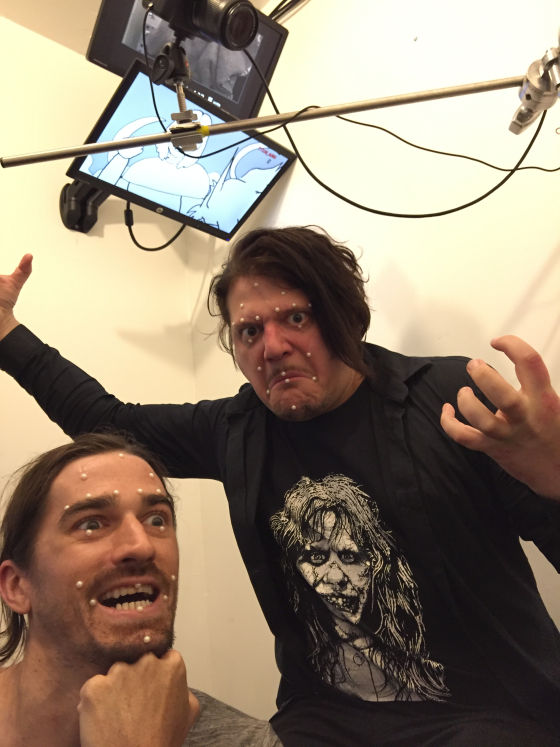
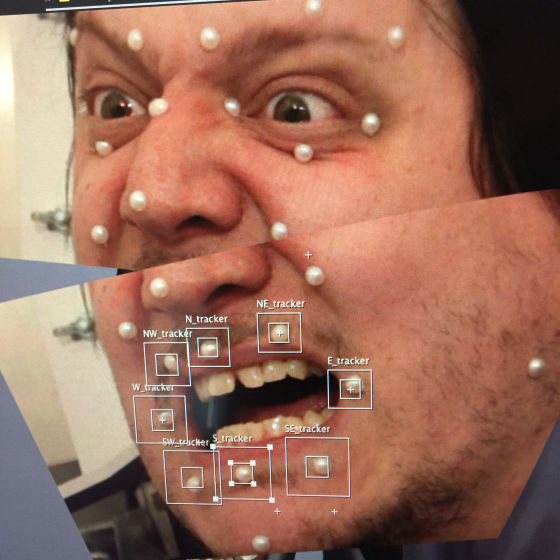
LBB> When beginning work on Tigtone, was it always part of your plan to try and animate in a totally new way?
Benjamin> Tigtone actually started as a live-action project. Around 2003 or 2004 Andrew and I started writing a live-action feature script and short films that all took place in this ridiculous fantasy universe we were building. We started shooting the first Tigtone short in 2004 or 2005. We only got a few shots of some giant lobsters guarding a valley of fire before we realised this was going to be far beyond our means to produce. So when Andrew started messing with this motion-capture technique, it made sense to try it on Tigtone because that was the character we had already started shooting.
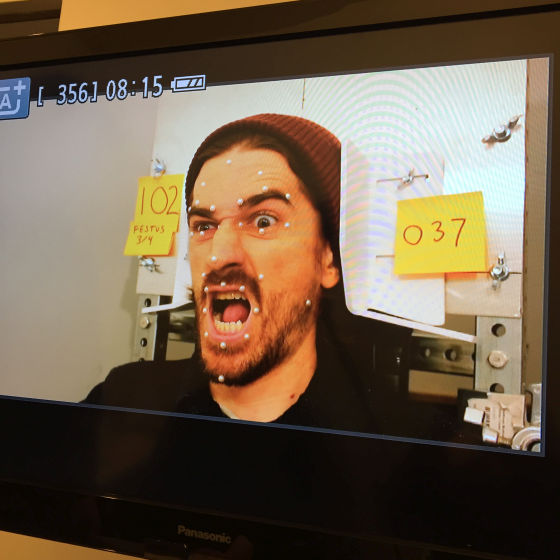
LBB> Your discovery of this type of animation involved "my laptop's built-in camera, a piece of art downloaded from the internet, and my moving mouth" - can you elaborate on this please? What led you to this experiment in the first place? What were you hoping to get out of it?
Andrew> It was all about preserving the look of the artwork. I wanted it to look like a Magic: The Gathering card come to life, and this experiment led to unexpectedly bizarre and fun results.
Benjamin> We wanted the live-action stuff to look like fantasy art and when that proved to be too much for us to tackle, the next logical step was to try and use actual fantasy art.
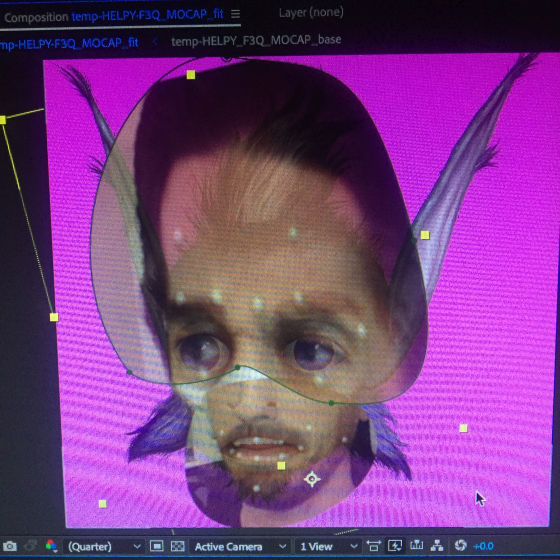
LBB> What was it about the technique that made you want to use it?
Benjamin> The face animation has this uncanny valley quality that’s both unsettling and mesmerising. It’s wonky and weird, but the nuances of our performances really come through (with the help of our very talented animators)! I can usually tell when it’s me, or Andrew, or Blake performing.
I love how the limitations add to the charm. Like sometimes their faces go a little wonky and we think it’s funny, so we just leave it in. Or how Tigtone always looks silly when he runs because our body rigs can’t do that much movement.
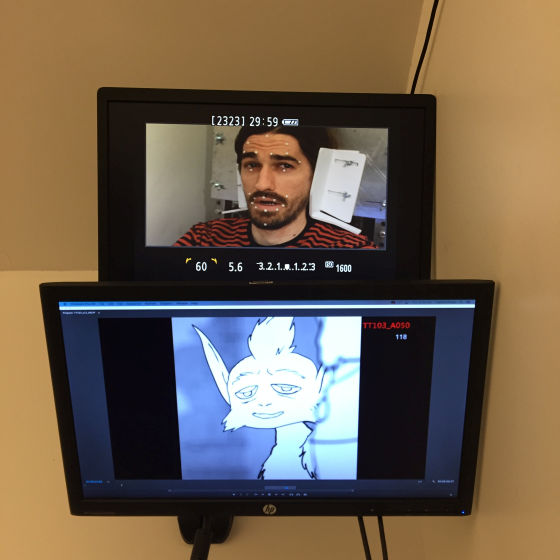
LBB> You spent a year after that honing it - what was that process like?
Andrew> It was a lot of trial and error, research and development, hurry up and wait, and blood, sweat, and tears. But really it was all about figuring out the practicality of it all - how do I warp his face without distorting his hair, how do I keep the teeth from floating around, etc. The answer always involved a lot of math and a lot of rendering.
Benjamin> Andrew was like MacGyver, digitally duct-taping this process together with different programs and plug-ins. When we started production at Titmouse, the animation studio that produces the series, we had to completely reinvent the production process to accommodate this bizarre technique.

LBB> Can you give an outline how it all works (in a way that an idiot like me would understand)?
Benjamin> After we have all the lines recorded and cut into the animatic (animated storyboards) we isolate every line for each character and categorise them by shot angle. We then glue pearl craft beads onto our faces at specific points to track the movement of the entire face. For example, we put three dots over each eyebrow to capture the way the eyebrows bend.
Then we strap ourselves into our motion-capture bench with a camera mounted overhead. We play back every single line on a loop and perform the line, trying to perform in sync with the line.
After that, the motion of each dot on our face is attached to the corresponding dot on the characters’ face to create the motion. Then the animators do a TON of work to hone in the performances - so it’s not just our faces doing all the work.
LBB> It's brilliantly terrifying to look at - on the one hand it's pretty gorgeous with almost photoreal interpretations of these amazing fantasy landscapes. And then the characters start talking with these crazy jarring mouths. Tell us more about the look and your love for it…
Andrew> The odd thing is, I never considered it THAT strange until people started mentioning it. I’m not sure what that says about me! We’re always careful to make it look good, but not TOO good. There’s a strong DIY spirit at the heart of the show, and we like the craft to be visible in the final product.
Benjamin> Yeah, I’m so used to it that it really seems normal to me. I’m surprised and delighted when people say it makes them physically ill to look at - but they can’t look away!
It should be pointed out that no one has really done animation like this before is because there is NO REASON for anyone to do animation this way. Limiting 3D motion capture to 2D characters completely negates the reason for doing 3D motion capture. And that’s why we love it. The process to create the show is just as convoluted as the content of the show. We’re big fans of convolution.

LBB> Each character has two actors... a voice actor and a facial one. How did that process work? Was it tricky?
Andrew> It takes a few tries, but it’s not too bad. The tough part is trying not to move while acting!
Benjamin> The voice actor’s performances definitely influences our physical performances. For example, I perform Helpy as very wide-eyed and side-mouthed, which is how I interpret Debi Derryberry’s vocal choices for Helpy.
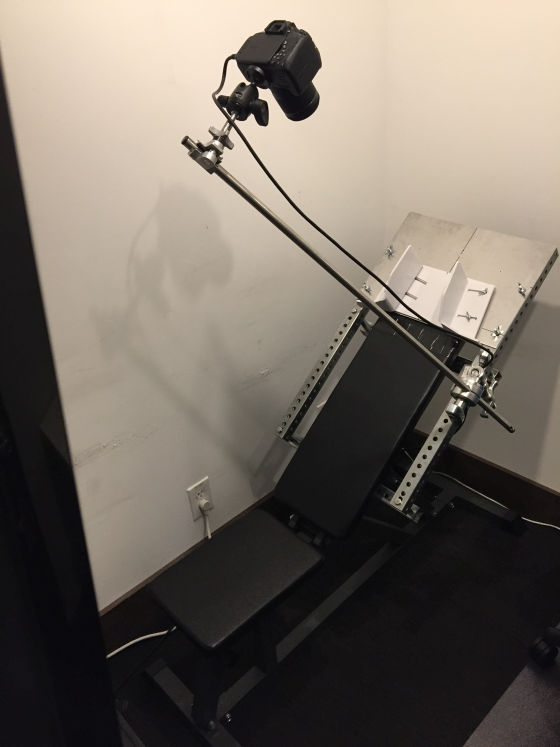
LBB> And tell us about the torture chair you needed to sit in for the facial recognition to work?
Benjamin> We built this bench with a paramedic head brace attached to it. We lay on the bench and clamp our heads down.
Andrew> The chair is there to stabilise our heads. All of the tracking is done manually in After Effects once the 2D footage has been filmed. Also, the chair hurts.

Benjamin> Because we’re using 2D characters, and we only have two-four angles of each character, we have to shoot the motion capture data to match the angles of our characters, and we can’t move our heads because it throws off the registration of our faces to the character’s face.
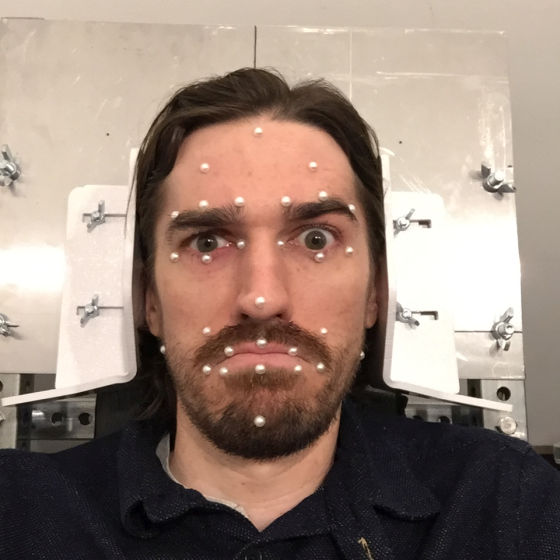
LBB> Is this a style of animation you'll look to explore more in the future?
Andrew> Anything is possible, but something tells me we should always be on the lookout for new ways to unsettle people!
Benjamin> I’d like to explore plugging directly into our souls and letting our inner demons do all the work.
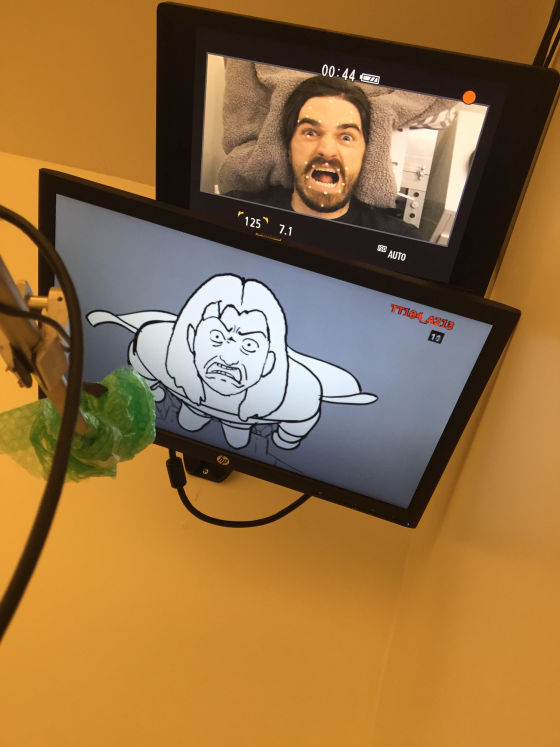
LBB> Anything else we should know?
Andrew> HELL NO.
Benjamin> Andrew and I both have skin conditions.













